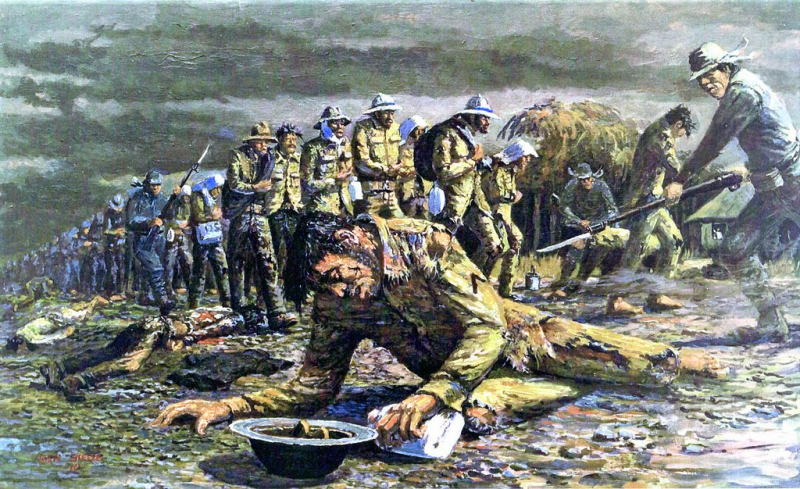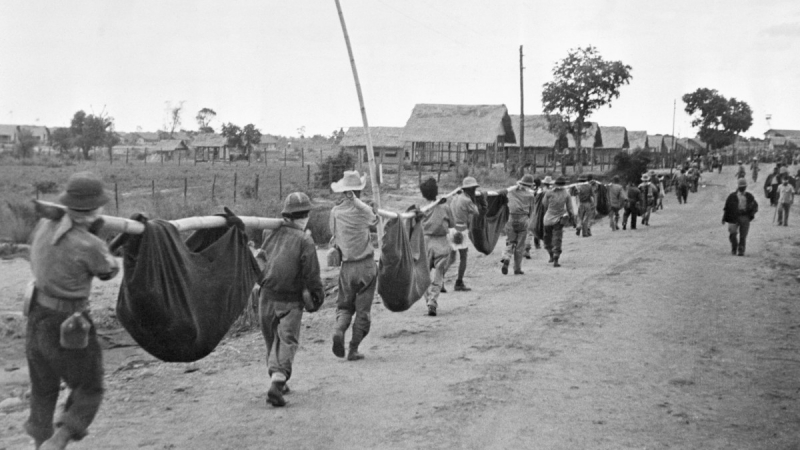The Bataan Death March
The Bataan peninsula in the Philippines had been conquered by the Imperial Japanese Army by April 9, 1942, forcing the capitulation of 70,000-80,000 American and Filipino forces. After months of surviving on limited food and many fatal outbreaks of illnesses such as malaria and yellow fever, people felt that whatever the Japanese had in store for them would be better.
However, they were mistaken, as they would gradually understand over the next few days. The Japanese saw the captives as an inferior form of humans, as surrender had no place in their military discipline, and forced them to endure a 65-mile march through thick forest and blistering heat - an incident that has now come to be known as the Bataan Death March.
Throughout the ten-day trek, the captives were purposefully starved and kept thirsty, and several were bayoneted or killed merely for begging for water. Some detainees were pushed in front of tanks for fun, while others were just shot if the Japanese soldiers didn't like how they looked. According to one estimate, by the time they arrived in the Japanese camp, just roughly 54,000 POWs remained.
- Year: 1942
- Location: Mariveles, Bataan and Bagac, Bataan to Capas, Tarlac, Luzon Island, Philippines
- Deaths: 10,000 people












